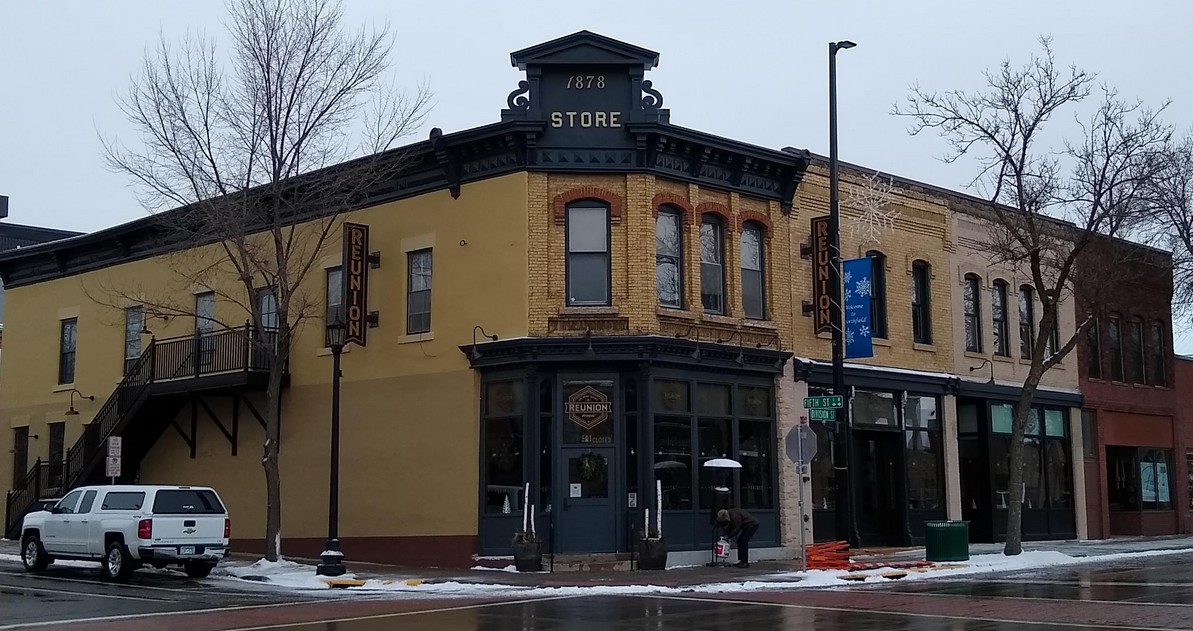The Corner of Fifth and Division: Part One
The Transformation of a Pioneer Tavern
The stage coach followed its normal route, up over the hill near Alexander Stewart’s log cabin, and headed for the Jenkins Tavern on the east edge of town. Hiram Scriver looked out the coach window that day in 1856, and saw “the lordly forest of hardwood trees which stretched westward almost from the banks of the Cannon river” and knew; he knew that “was where he wanted to spend the rest of his life.” And so he did, along with other adventurous newcomers. The pioneering spirit brought all kinds of people and upon first arrival to the burgeoning little village of Northfield, this future mayor of Northfield met some interesting characters: “the boarders at the two hotels in town [were] a ‘turbulent, roistering, good-natured and withal complaining, whining crew.’” Indeed, they were hardy in body as well as spirit and needed every bit of it because Northfield wasn’t the only unfinished thing they encountered. As the story goes, the newly constructed wooden Jenkins House had a cotton-cloth roof to protect twenty-five male boarders and did a pretty poor job when an unexpected thunder shower drenched them. The owner sent for shingles the next day.
Despite the freezing Minnesotan temperatures and scant accommodations of its pioneer towns, the stage made regular stops at both hotels and people who were committed to the same principles as the founders of Northfield—education, abolition, and temperance, among others—kept coming. Those strongly supporting temperance, in particular, were soon put to the test. John North, a lawyer as well as town founder, “inserted in deed of land in the original townsite…clauses prohibiting the sale of intoxicating liquor.” He extended this to public sales, as well: “no intoxicating drinks shall be sold or in any manner furnished as a beverage on said premises,” which, if violated, would void the contract. (Early Northfield Hotels, Carl Weicht) The Mansion, also known as The Cannon River House, was the second hotel built in 1857 on the other side of the Cannon River outside of John North’s prohibition jurisdiction. The owner knowingly opened a bar to willing patrons and angry townspeople. Its operation was short-lived, a scant few weeks, when three vigilantes expressed their righteous indignation and visited it one night, with axes in hand, and destroyed the bar and the offending beverage. The men, who were leading citizens and devout temperance supporters, paid a small fine and the bar owner was partially reimbursed. This action, however, put an end to that bar and the village remained dry.
In 1867, fire destroyed the Jenkins Tavern on the corner of Fifth and Division. Dr. John Schofield, the first doctor in town and in the county, bought the site and built a drugstore there to serve his patients, choosing limestone over wood. The building became known as the Scofield Building, housing a printing shop in the upper level. Fire struck ten years later in 1878 and destroyed most of the building leaving only the stone walls standing. Schofield rebuilt, this time using brick and cast iron. He added a sheet metal cornice which read: 1878 DRUG STORE. Over the years the first floor became home to other stores--a shoe store and a grocery and crockery store while the upper floor served as a rooming house and a meeting hall.
During the early 1900s, two other buildings were erected next to the Scofield Building at 501 Division Street, the Kelley Building at 503 Division Street, and the Henderson Building at 505 Division Street.The Henderson Building initially housed a warehouse for farming implements and later, from about 1942 to 1988, an appliance store. All About Northfield, a directory of names and businesses in town in 1889, lists a barber shop in the Kelley Building. Few records identify the specific shops found at these locations, but the Northfield Commercial Historic District Survey Revision Project 2016 notes that many retail and service shops came and went, filling in downtown Northfield during 1880 and 1900. By 1945, many consolidated with adjoining stores, either victims or benefactors of the “boom-and-bust” periods.
Such was the case for the businesses at the corner of Fifth and Division.

